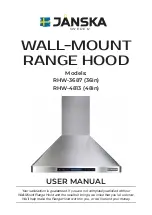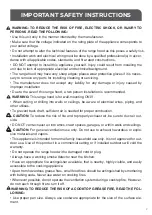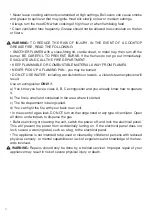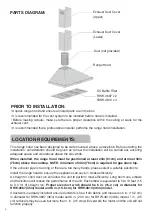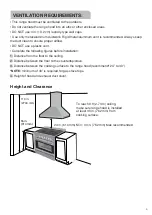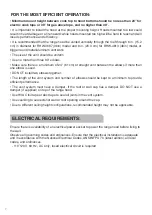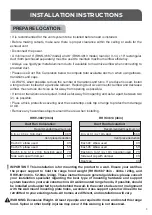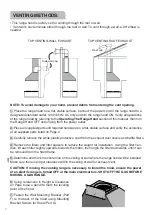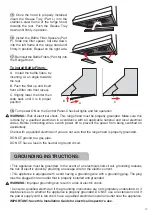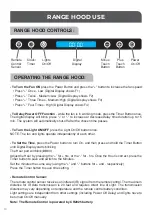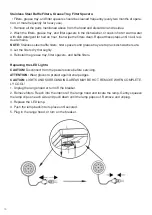
•
Minimum mount height between cook top to hood bottom should be no less than 24’’ for
electric cook tops or 30’’ for gas stove tops, and no higher than 30’’.
• It is important to install the hood at the proper mounting height. Hoods mounted too low could
result in heat damage or a fire hazard; while hoods mounted too high will be hard to reach and will
lose its performance and efficiency.
• It is recommended that the range hood be vented vertically through the roof through 6 in. (15.2
cm) in diameter for RHW-3687 (36in) model and 8 in. (20.3 cm) for RHW-4813 (48in) model, or
bigger round metal/aluminum vent work.
• The size of the vent should be uniform.
• Use no more than three 90° elbows.
• Make sure there is a minimum of 24” (61 cm) of straight vent between the elbows if more than
one elbow is used.
• DO NOT install two elbows together.
• The length of the vent system and number of elbows should be kept to a minimum to provide
efficient performance.
• The vent system must have a damper. If the roof or wall cap has a damper, DO NOT use a
damper (if supplied) on top of the range hood.
• Use HVAC foil tape or duct tape to seal all joints in the vent system.
• Use caulking to seal exterior wall or roof opening around the cap.
• Due to different ceiling height configurations, recommended height may not be applicable.
Ensure there is availability of an electrical power socket to power the range hood before fixing to
the wall.
Observe all governing codes and ordinances. Ensure that the electrical installation is adequate
and in accordance with the National Electrical Codes, ANSI/NFPA 70 (latest edition), all local
codes, and ordinances.
- 110̃120V, 60 Hz., AC only, fused electrical circuit is required.
FOR THE MOST EFFICIENT OPERATION:
ELECTRICAL REQUIREMENTS:
7

